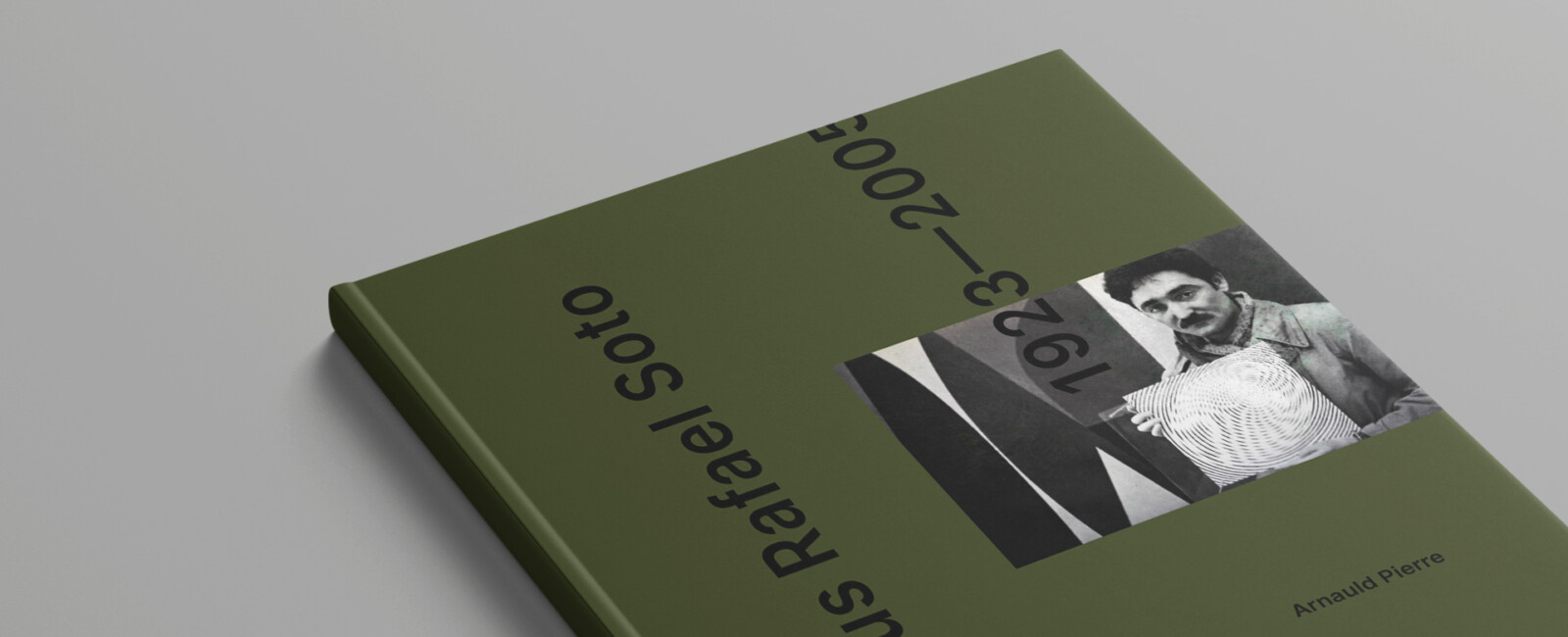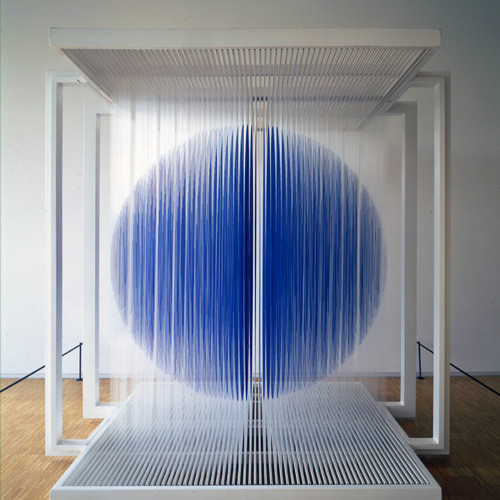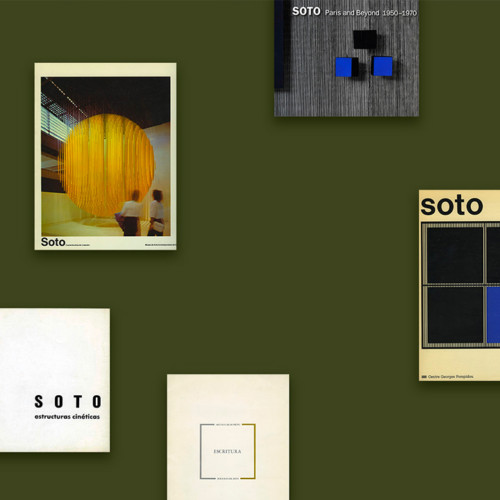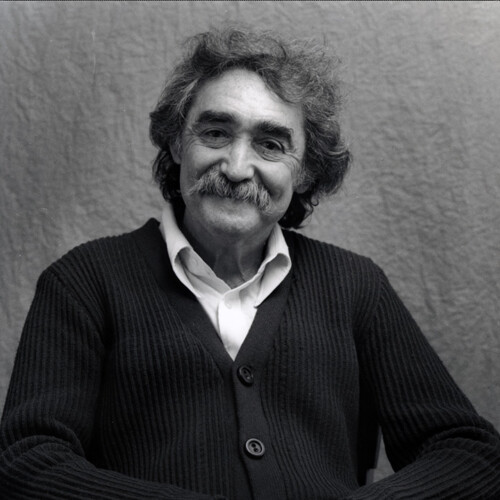
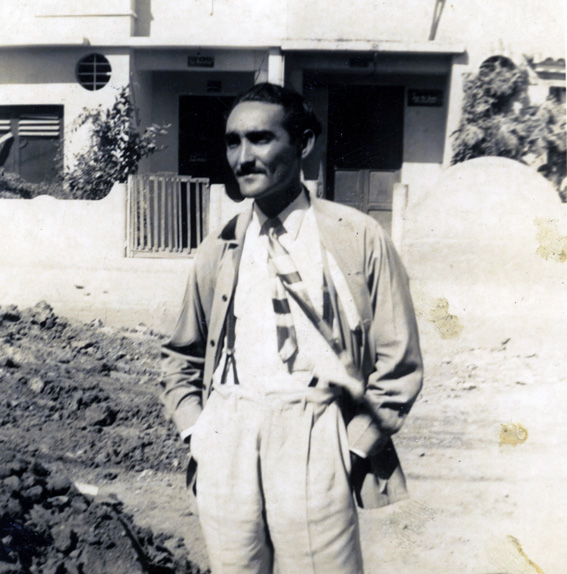
Soto fine arts student, Caracas, 1945 © Archives Soto / All Rights Reserved
Born in Ciudad Bolivar, Venezuela, in 1923, Jesús Rafael Soto was one of the leading exponents of Kinetic art – art that moves or appears to move.
From 1947 onwards, while working as head of the Escuela de Artes Plásticas in Maracaibo, Soto heard of and began to take an interest in geometric abstraction, a concept that originated in Europe.
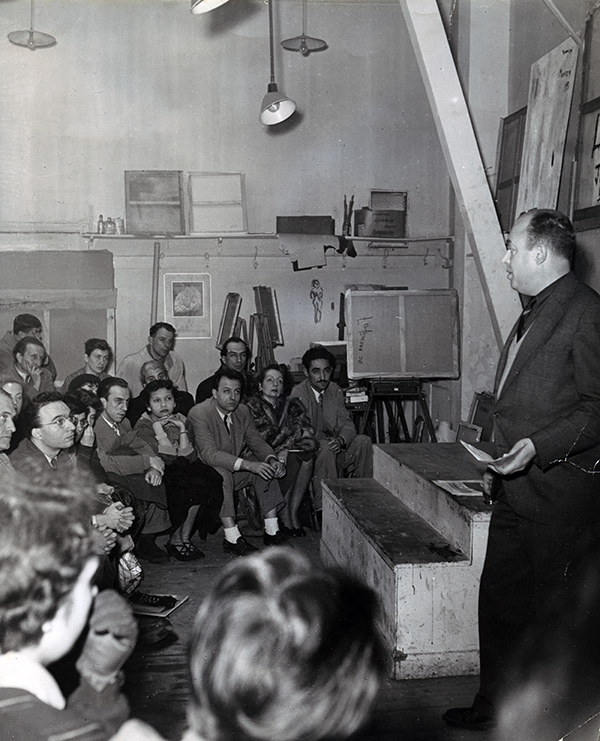
Léon Degand’s Conference, Abstract Art Studio, Paris, 1950. Jean Dewasne (front row), Aimée Battistini, Soto (in the background on the right) © Archives Soto / All Rights Reserved
Intrigued by the works of Malevich and Mondrian, with the encouragement of a friend, the Venezuelan painter Alejandro Otero, Soto applied for and was awarded a scholarship to study in Paris.
When he arrived there in 1950, he encountered other Venezuelans, including the members of Los Disidentes, and attended Léon Degand’s lectures at the Atelier d’Art Abstrait.
Shortly after arriving, he exhibited in the Salon des Réalités Nouvelles and made the acquaintance of Iris Clert, Denise René, Vasarely, Yves Klein, Jean Tinguely, Pol Bury and Daniel Spoerri.
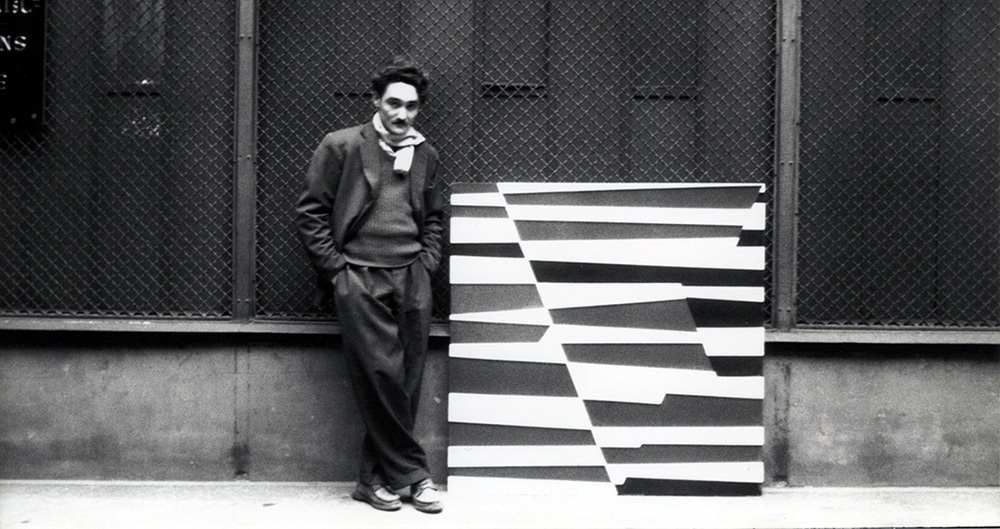
Soto with the central panel of his work “Mur optique”, 1951 © Archives Soto / All Rights Reserved
He contributed to the emergence of the Kinetic art movement,
by taking part in the 1955 exhibition Le Mouvement at Denise René’s gallery, and exhibited with the ZERO Group, who were also exploring the notion of the immaterial.
In his earliest works, Soto is already endeavouring to move beyond representation of two-dimensional geometric shapes and introducing movement by the device of repetition.
In 1953, he explored three-dimensionality by superimposing two layers of painted plexiglas that appeared to move when the viewer moved.
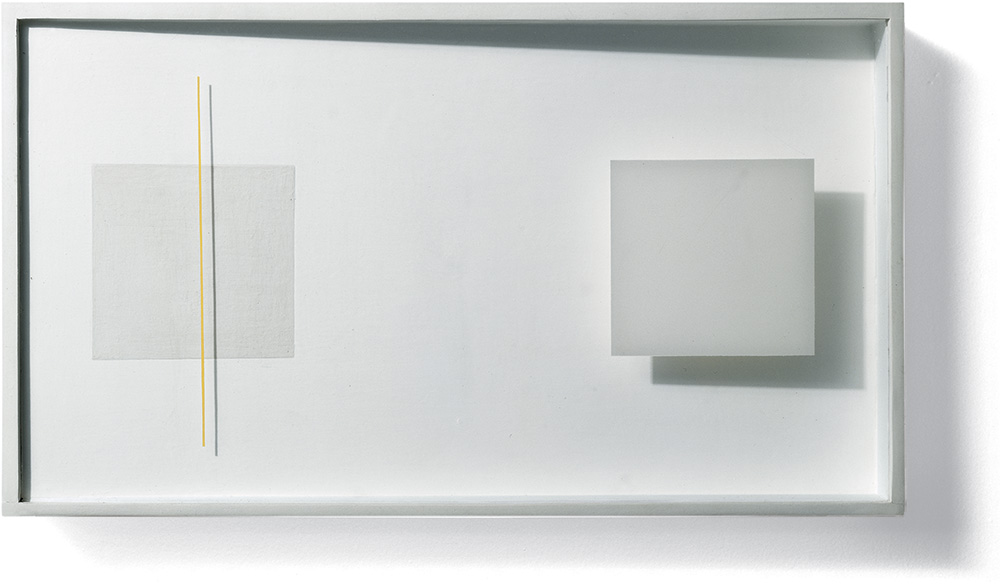
Soto. s/t, 1953
35 x 63 x 8 cm
Private collection
© Archives Soto / All Rights Reserved

Soto. “Première vibration”, 1957
50 x 50 x 17 cm
Private collection
© Archives Soto / All Rights Reserved
Using this device, in 1957, he produced the first of his Vibrations series –
works made by setting a tangle of metal wires or materials found in the street against a striped black and white ground to create a moiré effect.
Taking this concept to extremes & systematizing this method, Soto superimposes various elements on striped backgrounds: suspended mobile rods, metal squares or what he calls “Tes” – small T-shaped pieces of metal that appear and disappear as the viewer moves, offering a glimpse of an interstitial space that vibrates or oscillates between the visible and the invisible, the material and the immaterial.
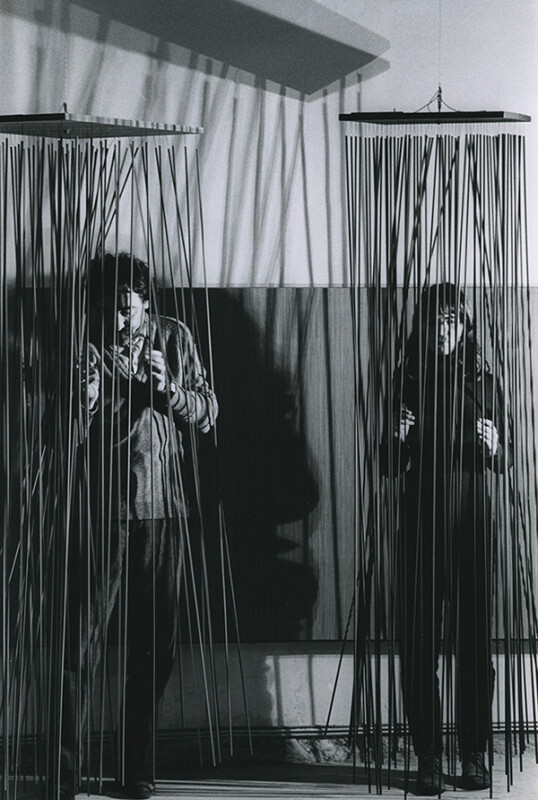
Soto. “Volume suspendu”, 1968
200 x 100 x 50 cm
Soto in his studio with his daughter Isabelle, Paris, France, 1968. Musée National d’Art Moderne – Centre Pompidou collection Photo Michel Desjardins
The viewer is central to Soto’s œuvre. In 1967 he produced his first Penetrables, works composed of metal rods and nylon strands hanging in space.
He invites the viewer to enter the work and walk around inside it, to apprehend the “matter-energy” of the world through “being” inside the work:
The viewer becomes an integral part of the work. Heretofore, the viewer was in the position of an external observer of reality. Today, the notion that there is mankind on one side and the world on the other has been superseded. We are not observers but constituent parts of a reality that we know to be teeming with living forces, many of them invisible. We exist in the world like fish in water: not detached from matter-energy; INSIDE, not IN FRONT OF; no longer viewers, but participants.
Soto, in Jean Clay, “Les Pénétrables de Soto”, Robho, n°3, Paris, 1968 (our translation)
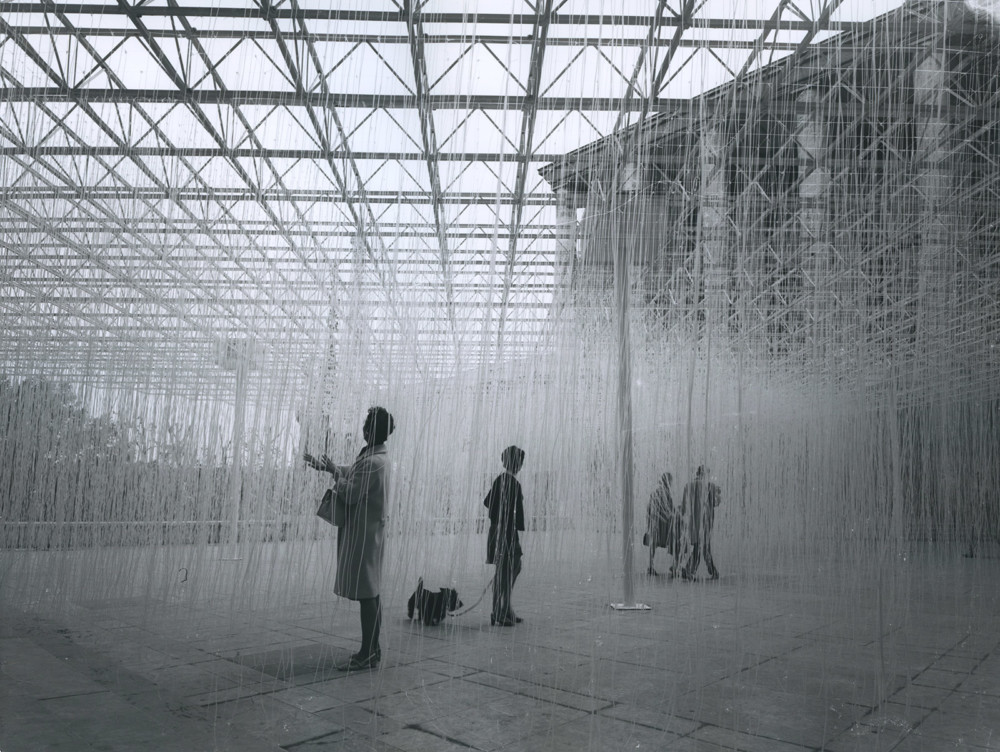
Soto. s/t, 1969
500 x 2919 x 2442 cm
“Soto” solo exhibition, Musée d’Art Moderne de la Ville de Paris, Paris, France, 1969 Photo André Morain
The first major solo exhibitions of Soto’s work took place in 1968, at the Kunsthalle in Berne and in 1969 at the Stedelijk Museum in Amsterdam.
More solo exhibitions followed at the Musée d’art moderne de la Ville de Paris in 1969, the Guggenheim Museum in New York in 1974, and the Museo de Arte Contemporáneo de Caracas in 1983.
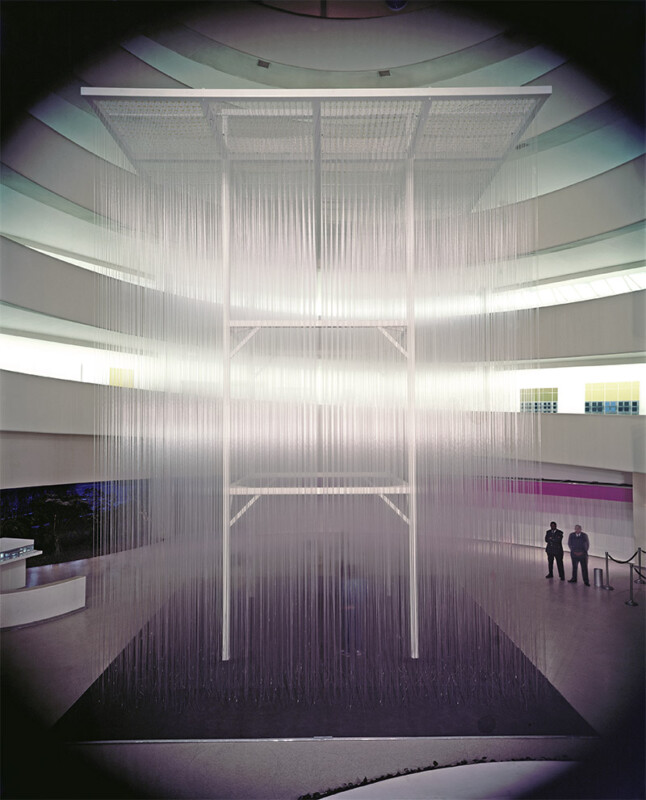
Soto. “Guggenheim Penetrable”, 1974
1100 x 800 x 800 cm
“Soto : A Retrospective Exhibition” exhibition, The Solomon R. Guggenheim Museum, New York, United States, 1973 © Archives Soto / All Rights Reserved
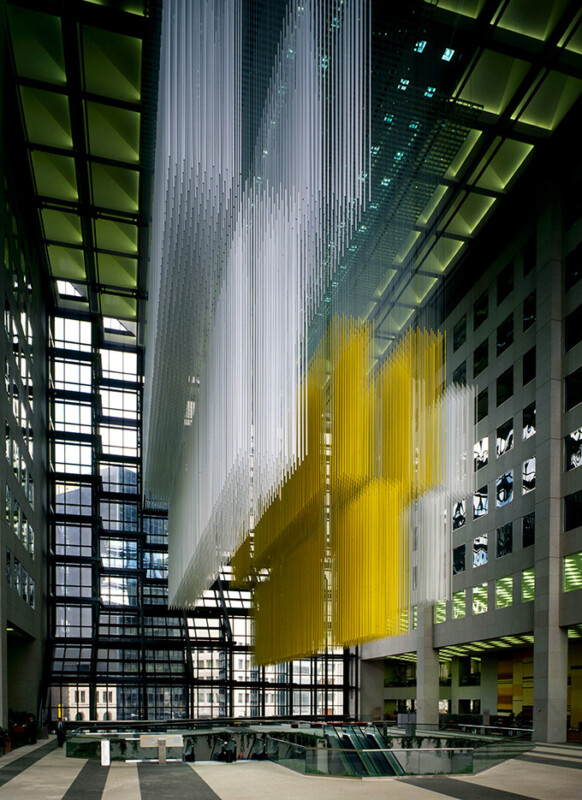
Soto. “Volume virtuel suspendu”, 1977
3000 x 2000 x 1800 cm
Royal Bank of Canada, Toronto, Canada
© Archives Soto / All Rights Reserved
Soto was commissioned to make numerous monumental works for public spaces and buildings all over the world.
These included UNESCO’s headquarters in Paris (1969), the Grand Hall de la Régie Renault, also in Paris (1975), the Royal Bank of Canada in Toronto (1977), the Centro Benaven, in Caracas (1979), and the Volume Virtuel at the Centre Pompidou (1987).
In 1973, with the aid of his architect friend Carlos Raul Villanueva, Soto built the Museo de Arte Moderno Jesús Soto in his native city of Ciudad Bolivar to house the sizeable collection of geometric and kinetic works he amassed throughout his life. The museum also contains many of Soto’s own most important works.
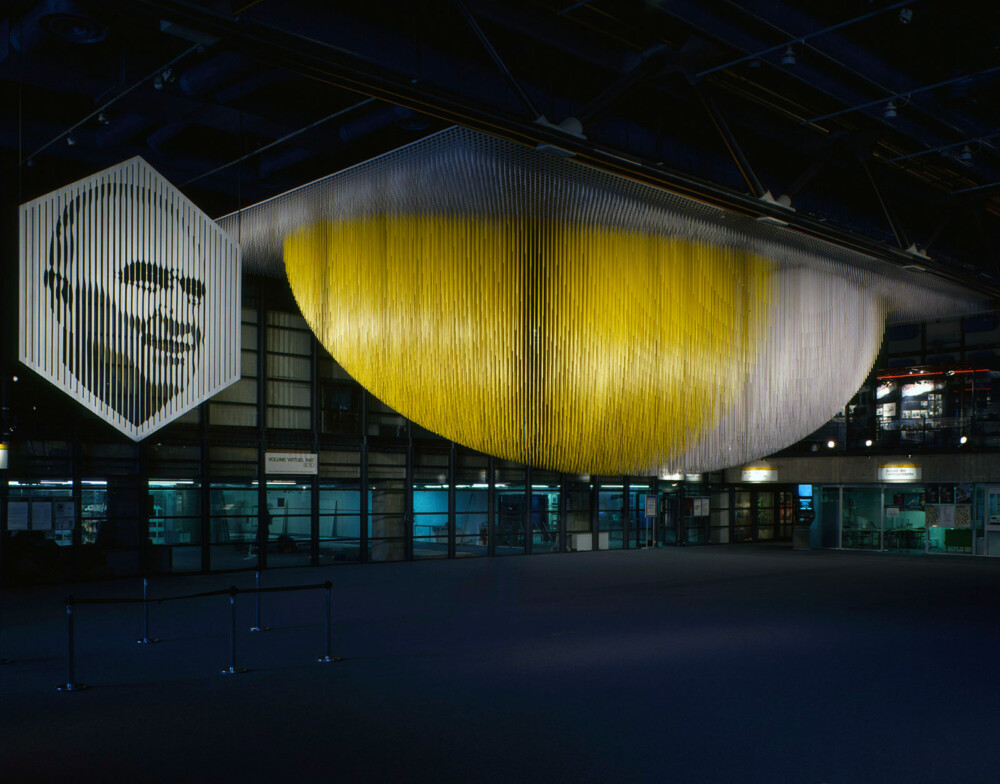
Soto. “Volume virtuel”, 1987
570 x 2150 x 1440 cm
Musée National d’Art Moderne – Centre Pompidou Collection © Archives Soto / All Rights Reserved
There have been many retrospectives of Soto’s work,
including one that was initially shown at the Musée du Jeu de Paume, in Paris, in 1997, and then toured for several years, another held at the Centro Cultural del Conde Duque in Madrid in 1998, and a large-scale travelling exhibition entitled Visión en movimiento that was shown at the Museo Tamayo, in Mexico, the Fundación Proa, in Argentina, and the Galleria d’Arte Moderna e Contemporanea, in Bergamo, Italy, in 2005.
In 2015 works by Soto were also exhibited at the Galerie Perrotin in Paris and New York & at the Musée Soulages in the city of Rodez in the south of France. In 2019 his works were exhibited at the Hauser & Wirth Gallery in New York and at the Guggenheim Bilbao in Spain.
By the time Soto died in Paris in 2005, he had received numerous distinctions, including the Venezuelan National Plastic Arts Award in 1984 & the French Grand Prix National de Sculpture in 1995.
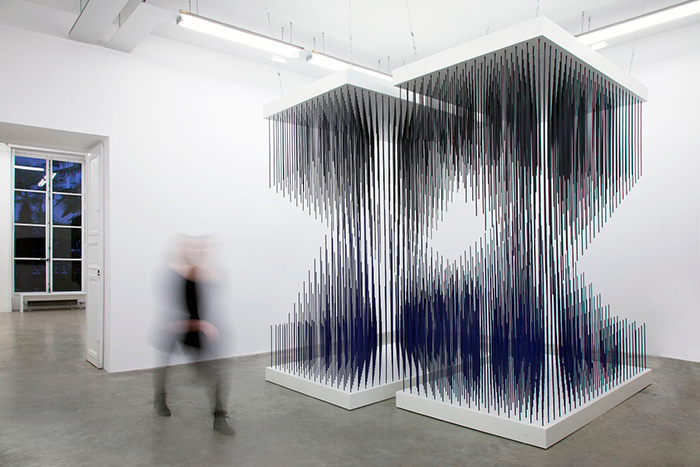
Soto. “Doble progresión azul y negra”, 1975
300 x 300 x 300 cm
“Chronochrome” exhibition, Perrotin Gallery, Paris, France, 2015. Photo © Pierre Antoine. Courtesy Perrotin Gallery

